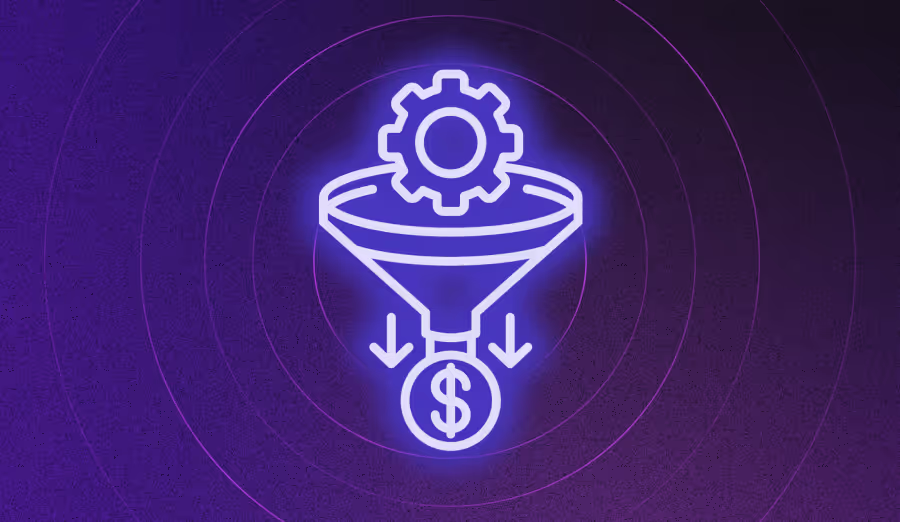The new KPI for ecommerce success: Conversion health

Growth is slowing — but friction is growing faster
Customer acquisition costs are higher than ever. Privacy rules limit targeting, ad efficiency is dropping, and every ecommerce leader faces the same question:
“If we can’t keep buying growth, how do we protect the growth we already have?”
The answer isn’t more traffic — it’s healthier conversions.
Every slow load, broken element, or subtle UX hiccup silently erodes revenue. Yet most retailers still measure success through traffic and conversion rate, not conversion health — the condition of the digital journey itself.
That’s changing fast.
What is conversion health?
Conversion health is a unified metric that measures how well your site performs where it matters most: across real sessions, real shoppers, and real revenue.
It blends three dimensions:
- Errors – technical issues like JavaScript crashes, API timeouts, or broken buttons.
- Performance – slow load times, blocking scripts, or degraded mobile responsiveness.
- UX friction – confusing flows, layout shifts, or dead-end interactions.
When these signals are tracked together, they reveal the true reliability of your ecommerce experience.
A healthy site isn’t just “up.”
It’s fast, stable, and intuitive — with every session having a fair chance to convert.
Why traditional KPIs fall short
Analytics show you what happened — traffic, conversion rate, bounce.
Monitoring tools show you that something broke.
Neither explains why revenue dipped yesterday.
That missing layer is conversion health — a KPI that connects site reliability and customer experience to business performance.
TL;DR – why conversion health matters
The three pillars of conversion health
1. Technical integrity
When something breaks, it breaks trust.
Every 404, timeout, or API failure is a moment a customer can’t complete their journey.
Healthy conversion begins with a stable foundation: detecting and resolving errors before they scale.
“Before Noibu, we were shining a flashlight in the dark. Now we can see the entire room.”
— Yoav Shargil, CDO, David’s Bridal
2. Performance efficiency
Speed is empathy.
A one-second delay in load time can drop conversions by double digits.
Yet traditional performance tools report scores, not revenue impact.
Conversion health reframes speed as a business metric — how much each millisecond affects sales.
“Noibu has been integral in delivering insights into site speed and helping us protect conversions.”
— Meredith Eads, Product Design Manager, Aeroflow Health
3. Experience clarity
Not every issue is technical.
Sometimes the layout shifts, the button feels off, or the scroll behavior causes confusion.
Conversion health captures these subtle signals of UX friction and shows how they affect checkout completion and repeat visits.
“We discovered that what we thought helped users was actually hurting them — Noibu’s sessions made that visible.”
— Meredith Eads, Aeroflow Health
Measuring conversion health
Leading retailers now track conversion health as a composite KPI made of:
These weights vary by brand, but the outcome is the same: one metric that reflects the true reliability of your online store.
When conversion health drops, you know customers are struggling — before revenue reports confirm it.
How Noibu operationalizes conversion health
Noibu automates the entire process:
- Uncover – captures every front-end error, performance slowdown, and UX friction point in real time.
- Quantify – calculates the revenue impact of each issue using session and funnel data.
- Prioritize – ranks fixes by business impact, not frequency.
- Resolve – gives developers technical context and reproduction steps.
- Verify – confirms resolution and measures recovered revenue.
This closed loop turns conversion health from a concept into an operational workflow.
“It’s not just about fixing bugs — it’s about optimizing the entire experience. We use Noibu to prioritize what drives revenue.”
— Eric Kelsey, Champion
The executive advantage
Conversion health gives senior ecommerce leaders a language that connects:
- Developers (who fix issues)
- Product owners (who plan sprints)
- Marketers (who drive traffic)
- Executives (who own revenue)
Instead of debating dashboards, teams align on a single score that defines digital performance.
Healthy conversion becomes a shared responsibility — and a measurable competitive advantage.
Case in point: when health drives growth
- Ribble Cycles used Noibu to identify 18 revenue-impacting bugs; fixing them produced a measurable conversion lift.
- Ariat quantified the ROI of bug fixes for the first time, linking technical errors to profit.
- Mejuri turned chaotic error data into clear revenue metrics after moving from generic monitoring tools.
Each of these retailers improved their conversion health score — and unlocked new revenue without new ad spend.
Why conversion health is here to stay
Performance and UX expectations will only rise.
Generative AI, composable stacks, and new frameworks introduce more code complexity — and more risk.
Conversion health gives ecommerce brands the confidence to innovate faster, knowing that every experiment is backed by real-time visibility into stability and impact.
“I can release faster because I know if something breaks, I’ll be alerted — and I’ll know exactly what it costs.”
— Yoav Shargil, David’s Bridal



